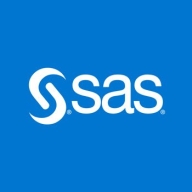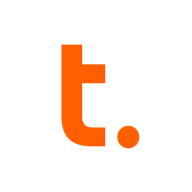

Find out what your peers are saying about Salesforce, Apache, Splunk and others in Data Visualization.
The enterprise subscription offers more benefits, ensuring valuable outcomes.
At least fifteen to twenty percent of our time has been saved using Teradata, which has positively affected team productivity and business outcomes.
We have realized a return on investment, with a reduction of staff from 27 to eight, and our current return on investment is approximately 14%.
They provide callbacks to ensure clarity and resolution of any queries.
The customer support for Teradata has been great.
The technical support from Teradata is quite advanced.
Customer support is very good, rated eight out of ten under our essential agreement.
Whenever we need more resources, we can add that in Teradata, and when not needed, we can scale it down as well.
This expansion can occur without incurring downtime or taking systems offline.
Scalability is complex as you need to purchase a license and coordinate with Teradata for additional disk space and CPU.
SAS Visual Analytics is stable and manages data effectively without crashing.
The workload management and software maturity provide a reliable system.
I find the stability to be almost a ten out of ten.
In terms of configuration, I would like to see AI capabilities since many applications are now integrating AI.
If the same thing were available in a web interface, that would be really helpful.
If Teradata could provide a list of certified experts, that would be fantastic.
Unlike SQL and Oracle, which have in-built replication capabilities, we don't have similar functionality with Teradata.
Teradata is much more expensive than SQL, which is well-performed and cheaper.
Initially, it may seem expensive compared to similar cloud databases, however, it offers significant value in performance, stability, and overall output once in use.
We spent roughly $295,000 on setup costs.
In terms of reporting, it is easy to extract quick reports and provides graphical representations of the data, which is a great feature.
Teradata's security helps our organization meet compliance requirements such as GDPR and IFRS, and it is particularly essential for revenue contracting or revenue recognition.
The first thing that I appreciate about Teradata is its multi-parallel processing. Whatever queries we execute on Teradata, they are blazingly fast, so it offers really fast connectivity.
The data mover is valuable over the last two years as it allows us to achieve data replication to our disaster recovery systems.
| Product | Market Share (%) |
|---|---|
| SAS Visual Analytics | 2.9% |
| Tableau Enterprise | 17.6% |
| Domo | 8.2% |
| Other | 71.3% |
| Product | Market Share (%) |
|---|---|
| Teradata | 11.1% |
| Oracle Exadata | 13.1% |
| Snowflake | 11.6% |
| Other | 64.2% |


| Company Size | Count |
|---|---|
| Small Business | 13 |
| Midsize Enterprise | 8 |
| Large Enterprise | 19 |
| Company Size | Count |
|---|---|
| Small Business | 26 |
| Midsize Enterprise | 12 |
| Large Enterprise | 50 |
SAS Visual Analytics is a data visualization tool that is used for reporting, data exploration, and analytics. The solution enables users - even those without advanced analytical skills - to understand and examine patterns, trends, and relationships in data. SAS Visual Analytics makes it easy to create and share reports and dashboards that monitor business performance. By using the solution, users can handle, understand, and analyze their data in both past and present fields, as well as influence vital factors for future changes. SAS Visual Analytics is most suitable for larger companies with complex needs.
SAS Visual Analytics Features
SAS Visual Analytics has many valuable key features. Some of the most useful ones include:
SAS Visual Analytics Benefits
There are many benefits to implementing SAS Visual Analytics. Some of the biggest advantages the solution offers include:
Reviews from Real Users
Below are some reviews and helpful feedback written by PeerSpot users currently using the SAS Visual Analytics solution.
A Senior Manager at a consultancy says, “The solution is very stable. The scalability is good. The usability is quite good. It's quite easy to learn and to progress with SAS from an end-user perspective.
PeerSpot user Robert H., Co-owner at Hecht und Heck GmbH, comments, “What I really love about the software is that I have never struggled in implementing it for complex business requirements. It is good for highly sophisticated and specialized statistics in the areas that some people tend to call artificial intelligence. It is used for everything that involves visual presentation and analysis of highly sophisticated statistics for forecasting and other purposes.
Andrea D., Chief Technical Officer at Value Partners, explains, “The best feature is that SAS is not a single BI tool. Rather, it is part of an ecosystem of tools, such as tools that help a user to develop artificial intelligence, algorithms, and so on. SAS is an ecosystem. It's an ecosystem of products. We've found the product to be stable and reliable. The scalability is good.”
Teradata is a powerful tool for handling substantial data volumes with its parallel processing architecture, supporting both cloud and on-premise environments efficiently. It offers impressive capabilities for fast query processing, data integration, and real-time reporting, making it suitable for diverse industrial applications.
Known for its robust parallel processing capabilities, Teradata effectively manages large datasets and provides adaptable deployment across cloud and on-premise setups. It enhances performance and scalability with features like advanced query tuning, workload management, and strong security. Users appreciate its ease of use and automation features which support real-time data reporting. The optimizer and intelligent partitioning help improve query speed and efficiency, while multi-temperature data management optimizes data handling.
What are the key features of Teradata?In the finance, retail, and government sectors, Teradata is employed for data warehousing, business intelligence, and analytical processing. It handles vast datasets for activities like customer behavior modeling and enterprise data integration. Supporting efficient reporting and analytics, Teradata enhances data storage and processing, whether deployed on-premise or on cloud platforms.
We monitor all Data Visualization reviews to prevent fraudulent reviews and keep review quality high. We do not post reviews by company employees or direct competitors. We validate each review for authenticity via cross-reference with LinkedIn, and personal follow-up with the reviewer when necessary.